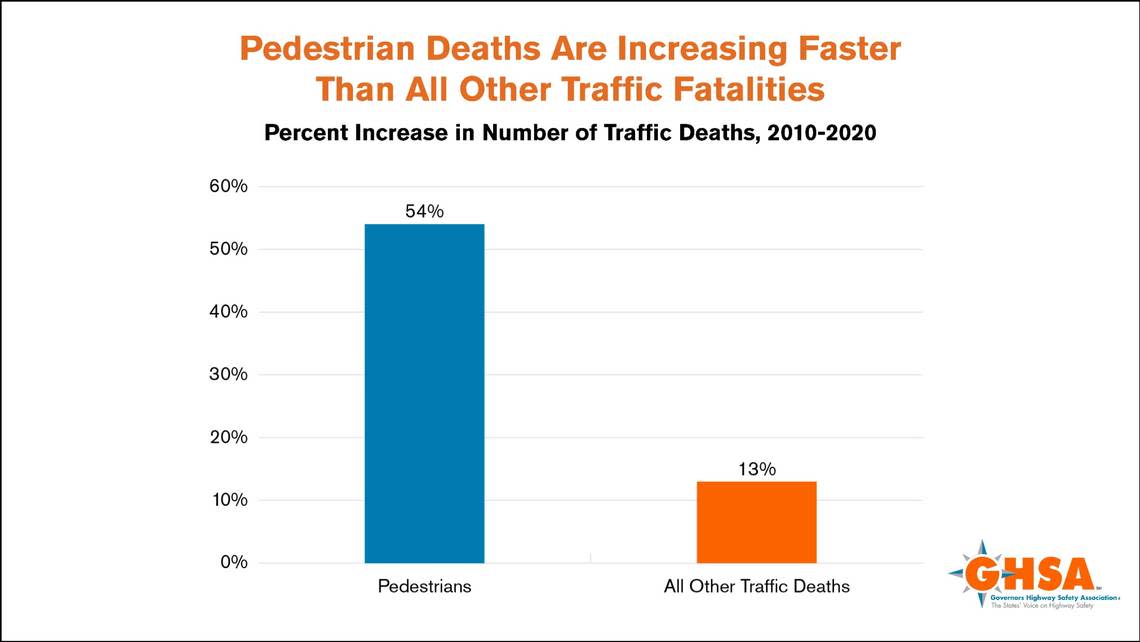Florida second-deadliest state for pedestrians, study finds. Rising toll ‘an epidemic’
If you need or want to go somewhere on foot in South Florida, watch your step. Walking could be hazardous to your health.
Miami-Dade and Broward counties are among the most dangerous places to be a pedestrian in the United States, and Florida is the second most perilous state in the nation.
Among the 100 biggest metropolitan areas, Miami-Fort Lauderdale-Pompano Beach ranked No. 14 as the metropolis where a pedestrian is most likely to be struck and killed by a driver, according to the 2022 “Dangerous By Design” report from Smart Growth America and the National Complete Streets Coalition. About 240 miles north, Daytona Beach-Deltona-Ormond Beach earned the unwanted No. 1 ranking as the deadliest place to walk. Despite that, Florida, which placed seven metro areas in the top 20, slipped to No. 2 in the state rankings, behind New Mexico.
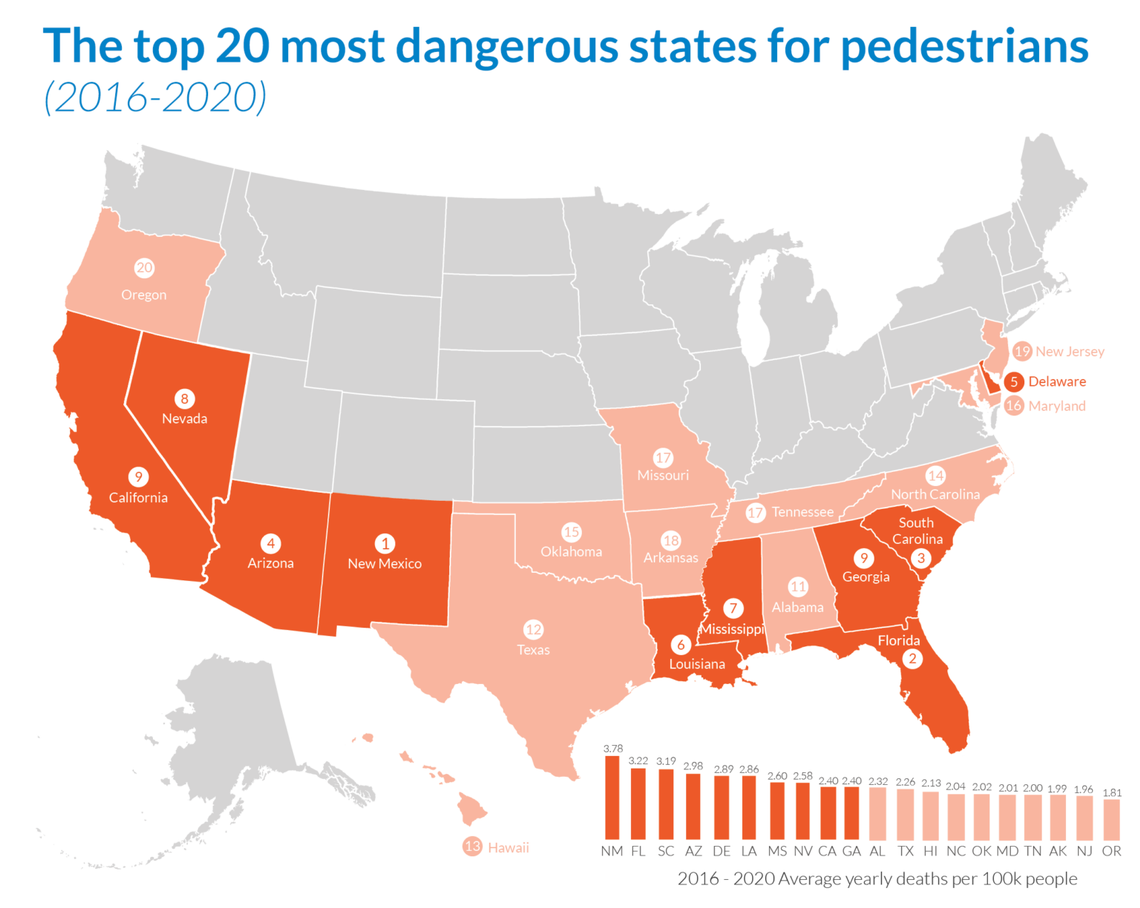
More pedestrians were killed nationwide during the first year of the COVID-19 pandemic even as people drove less — but at faster speeds because there were fewer cars on the road, the study found in its evaluation of five years of data starting in 2016.
Nearly 18 people per day, a total of 6,529, were hit and killed while walking in 2020, a 4.7 percent increase compared to 2019 and a 62 percent increase since 2009.
“This is an epidemic, and unsafe road design is a major culprit,” said Calvin Gladney, president and CEO of Smart Growth America, a nonprofit urban development advocacy organization. “We need to improve roads so that no one has to risk their life when crossing the street.”
Preliminary estimates project an increase to 7,265 fatalities in 2021 when that data becomes available, said Beth Osborne, vice president for transportation at Smart Growth America.

“Of 100 metro areas, 81 grew more deadly as did 46 states, by shocking amounts,” she said. “Those that slid down in the rankings have nothing to brag about because they did not become more safe; they’ve been supplanted by places that became less safe. Every city in the United States compares terribly to our peers around the world.”
Various studies show that while comparably affluent European nations have reduced pedestrian and cyclist fatality rates over the past 10 years, U.S. rates and the number of fatalities have increased dramatically.
“These are preventable deaths,” Osborne said. “Other countries have the same challenges we do — distracted drivers, reckless behavior — yet they’ve managed to tackle these problems and protect their citizens. What’s different here is a highway-centric default design telling drivers to move fast. While they design their roads for safety, we design ours for speed that produces danger for everyone who is not in a vehicle. Just look at our bus stops: You are often standing next to what is basically a highway, with cars zooming by you at 55 miles per hour.”
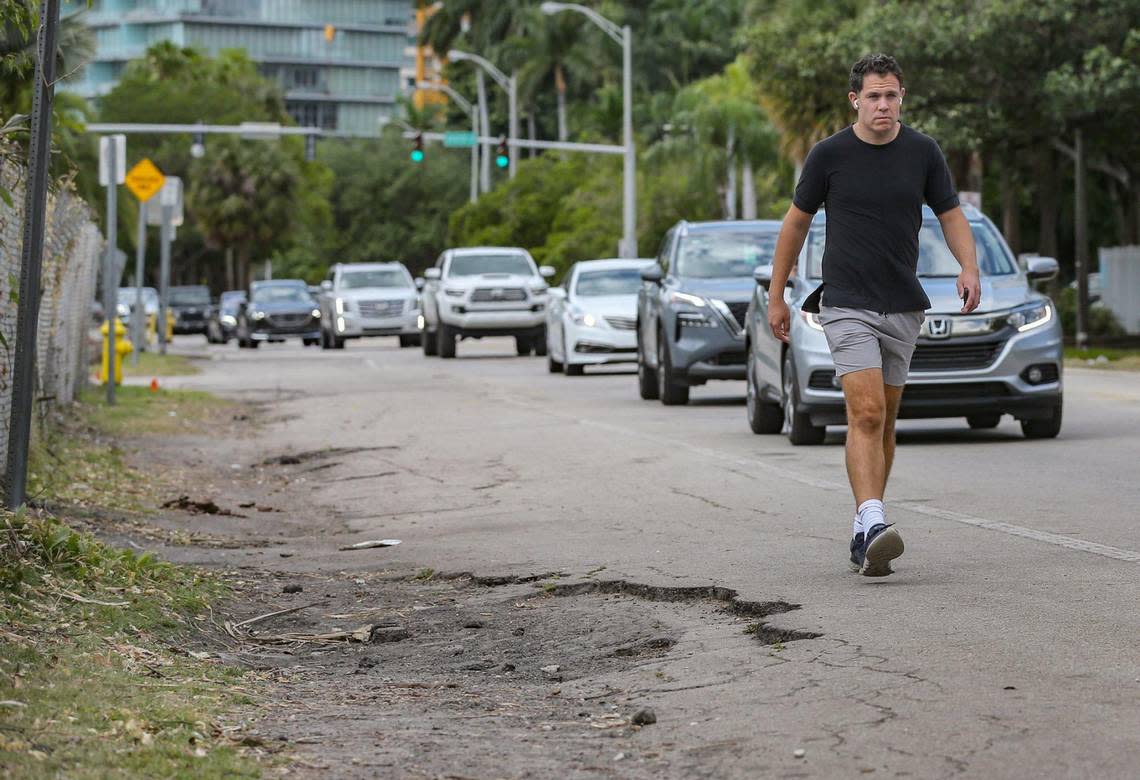
Florida averaged 3.22 pedestrian deaths per year per 100,000 residents for a total of 3,420 deaths from 2016 through 2020. New Mexico, with a 3.76 death rate, replaced Florida as the state where a person who is walking is most likely to be struck and killed by a driver as the death rate in Albuquerque ballooned over the five-year period of the study.
California and Georgia (2.4) tied at No. 9, with Texas (2.26) at No. 12, New York (1.35) at No. 31, Ohio (1.18) at No. 37, Massachusetts at No. 42 (1.06), and Iowa (.73) ranked as the safest state for pedestrians.
Sun Belt states are the most dangerous because of the way they were built, Osborne said.
“Their post-World War II growth meant they did not have historic, walkable city centers,” she said. “They were developed around the idea of the car and speed as priorities and embraced building vast highway-like roads where those types of roadways didn’t really belong.”
Daytona Beach, certainly known for its car culture as the home of the Daytona 500 and with cars allowed to drive on beaches, led the list of deadliest metro areas with an average yearly pedestrian death rate of 4.25 per 100,000 residents for a total of 140 deaths from 2016 through 2020. Rounding out the top five: Albuquerque, Memphis, Tampa-St. Petersburg and Charleston, South Carolina.
The greater Miami-Fort Lauderdale area ranked 14th on the most hazardous list with a 3.11 death rate and a total of 954 deaths for 2016-2020.
That’s compared to Atlanta (No. 27, 2.53), Los Angeles (No. 32, 2.4), Dallas (No. 44, 2.04), New York (No. 61, 1.52), Chicago (No. 75, 1.36), Boston (No. 94, .96), and Orem-Provo, Utah, ranked as the safest metro area (.57).
The report includes a searchable (by address or city) interactive map that plots every pedestrian fatality from 2008-2020.
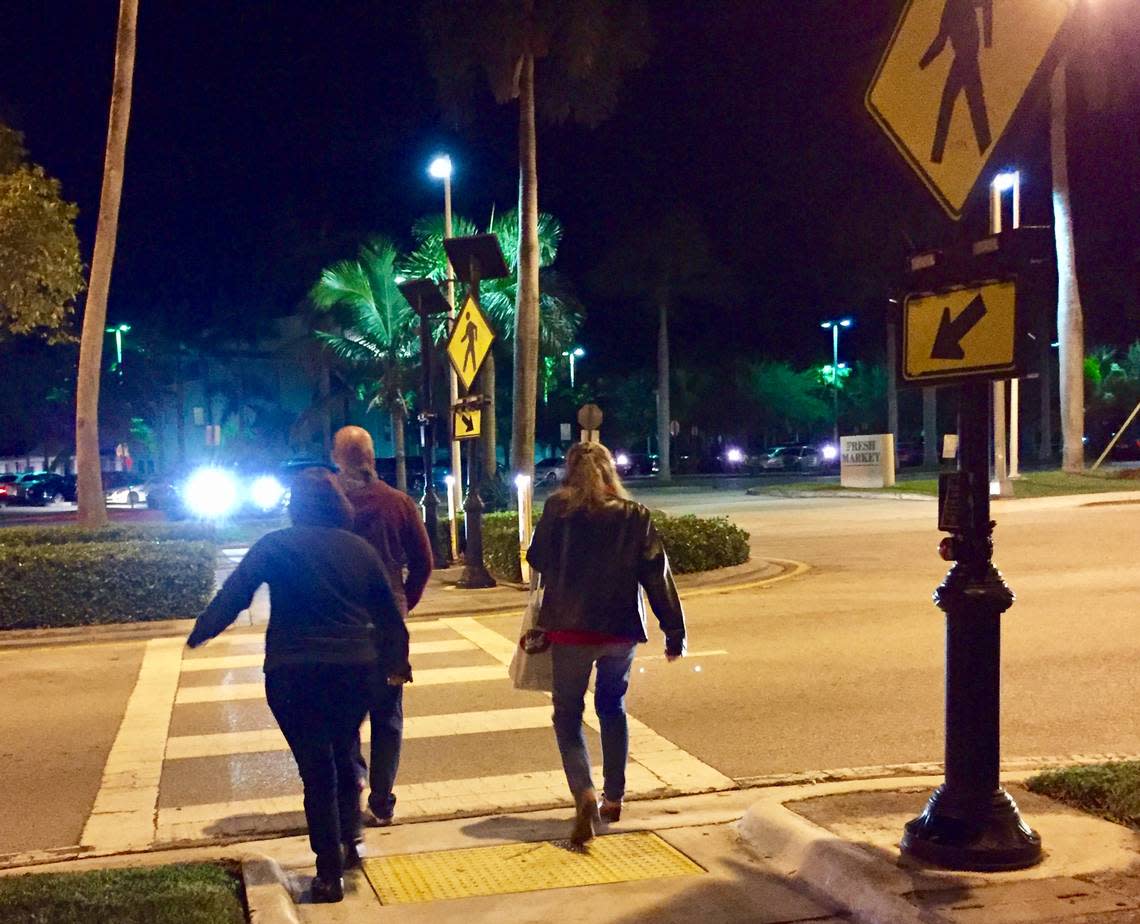
While Miami is notorious as a place where its hostile drivers regard the car as king, that mentality is changing, said Kurt Kaminer, a spokesman for the University of Miami’s UHealth WalkSafe and BikeSafe programs, which advocate for injury prevention and safety awareness through improved pedestrian and cycling infrastructure.
“We do have a lot of people with a ‘Mad Max Fury Road’ approach to driving,” Kaminer said. “And some very brave people running for their lives just trying to get from point A to point B. That creates conflicts and crashes.
“But we finally have people who see the necessity and the appeal of safe streets, safe mobility options, safe commutes and safe recreation, and they are asking for change. They want pedestrians, cyclists, public transportation users — human beings — prioritized over cars.”
As in the Smart Growth report, Kaminer cited the need for better street design that slows traffic, more sidewalks, more crosswalks, more protected bike lanes and more connectivity so that non-motorists can utilize an expansive network.
“Although our engineers know all the best practices that have been implemented in cities around the world, we have a reputation for only fixing dangerous streets after a loss of life,” Kaminer said, referring to two cyclists who were struck and killed in the drop lane of the Rickenbacker Causeway on May 15 by the driver of a Jeep. “The county, Mayor [Daniela] Levine Cava, and transportation and public works director [Eulois] Cleckley fixed that drop lane problem in one day, and I’m optimistic they’re committed to the transformation that’s overdue.”
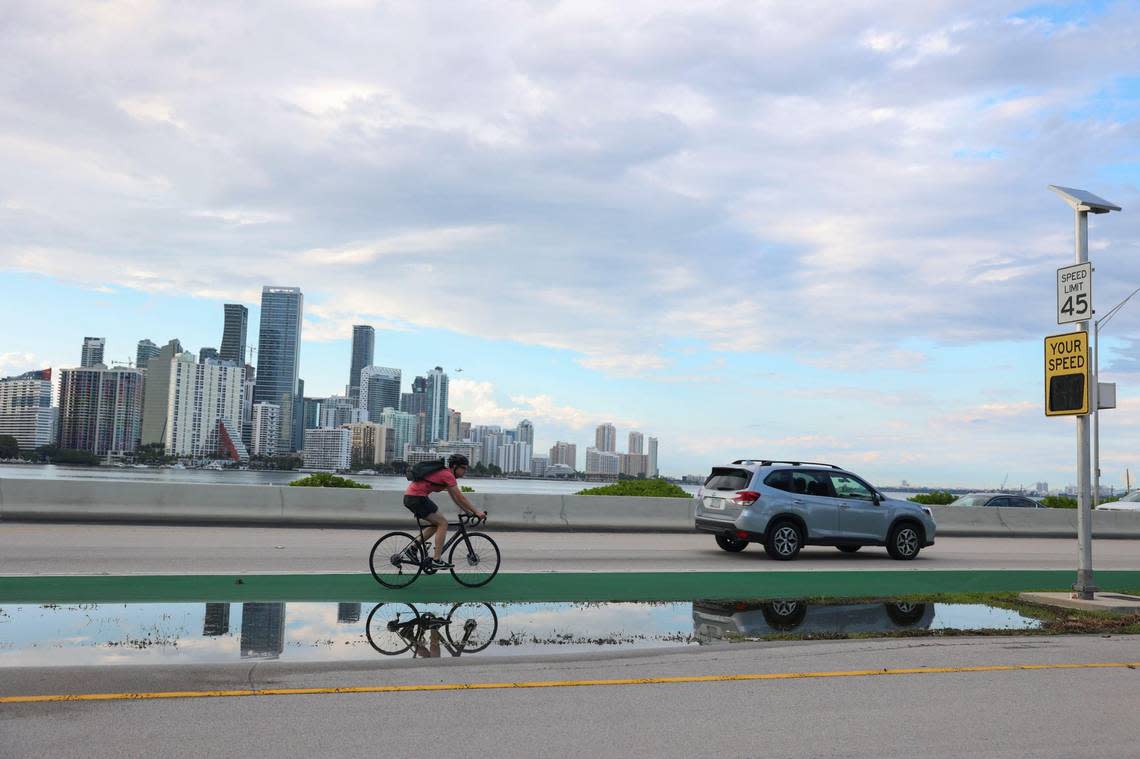
That transformation can’t leave out Miami’s inner city, Kaminer said. The Smart Growth study showed that low-income neighborhoods have a disproportionate number of pedestrian fatalities and are in dire need of safe streets. Black pedestrians were twice as likely to be killed while walking than white pedestrians, while Native Americans faced risks three times greater than white people.
“It’s unacceptable that the color of your skin has so much of an impact on whether you can walk safely in your own neighborhood without being hit by a car,” Gladney said.
Older Americans are also more vulnerable, said report coordinator Rayla Bellis.
“As our population ages, this trend will become more pronounced,” she said. “Overall, our data for 2021 shows that all deaths are trending significantly higher.”
